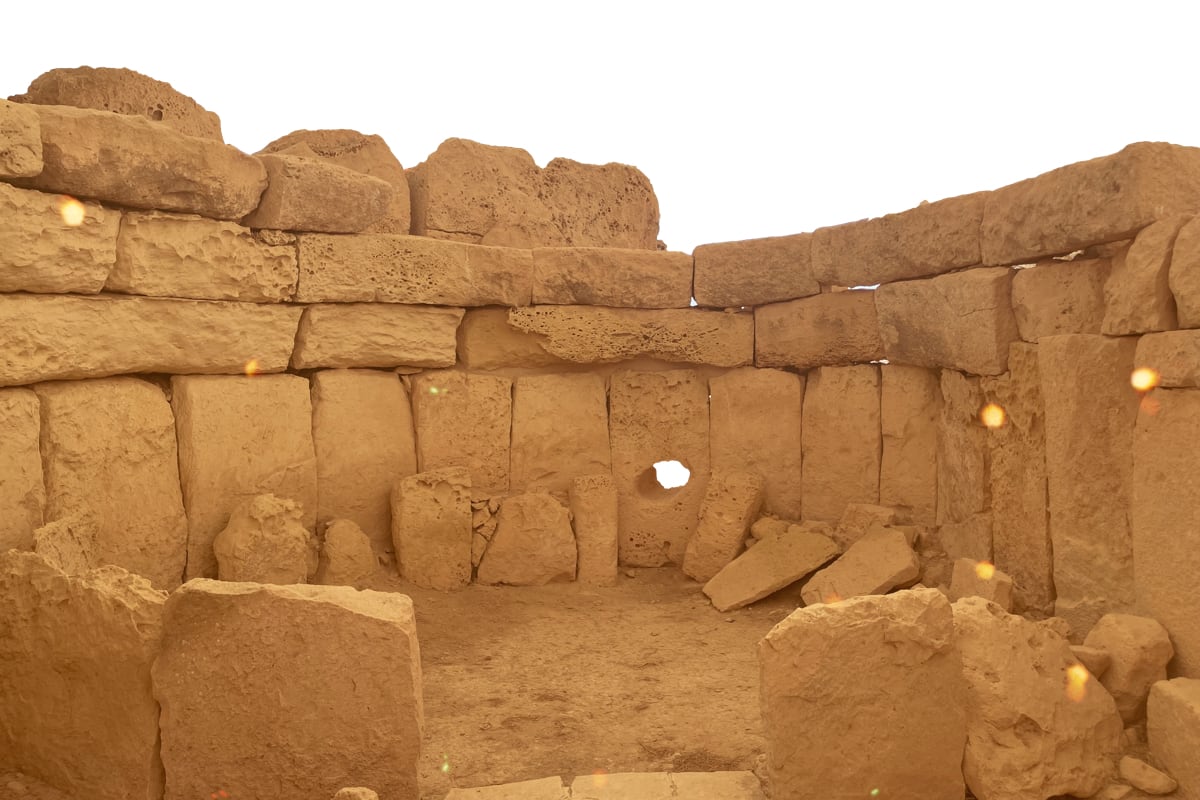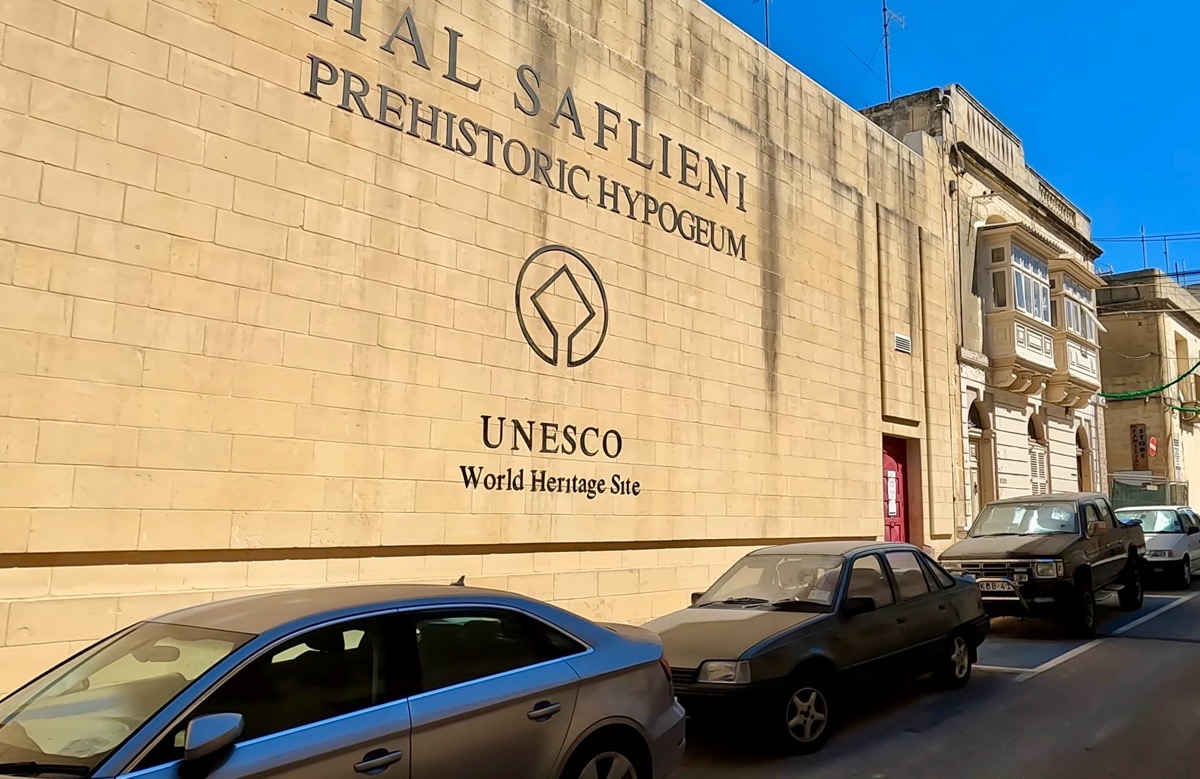Ħaġar Qim, located near the village of Qrendi on the southwest coast of Malta, is one of the island’s most intriguing prehistoric sites. It dates back to around 3600–3200 BC and forms part of the group of megalithic temples recognized as a UNESCO World Heritage Site.

Massive limestone blocks
Perched on a hill with panoramic views of the sea and the islet of Filfla, it offers a unique blend of natural beauty and ancient history. The site was first documented in the early 19th century, sparking interest among European scholars who were fascinated by Malta’s rich archaeological heritage. Excavations began around 1839, revealing massive limestone blocks and finely carved features that shed light on the island’s Neolithic temple builders.
Archaeologists believe Ħaġar Qim served as a spiritual and communal gathering place, with chambers and altars that hint at complex rituals performed by Malta’s prehistoric inhabitants. Some of the most significant artifacts found here include the so-called “Fat Lady” statues, which provide clues about possible fertility cults or mother goddess worship in the region.
A modern complex
 A large protective shelter now covers the site to help preserve the fragile limestone and delicate carvings. Visitors can walk among the temple’s megaliths, tracing the outlines of walls and doorways that have stood for millennia. A modern visitor center introduces newcomers to Ħaġar Qim’s history through interactive displays and a short film. Regular visitors often return to see rotating exhibitions that highlight ongoing research, as archaeologists continue to refine our understanding of this remarkable complex. There is also a nearby café where you can relax and enjoy views of the coastline once you have explored the ancient stones.
A large protective shelter now covers the site to help preserve the fragile limestone and delicate carvings. Visitors can walk among the temple’s megaliths, tracing the outlines of walls and doorways that have stood for millennia. A modern visitor center introduces newcomers to Ħaġar Qim’s history through interactive displays and a short film. Regular visitors often return to see rotating exhibitions that highlight ongoing research, as archaeologists continue to refine our understanding of this remarkable complex. There is also a nearby café where you can relax and enjoy views of the coastline once you have explored the ancient stones.
A deep connection to prehistory
The surrounding landscape creates a striking backdrop for photography and reflection. Pathways allow you to explore at your own pace, pausing to consider the significance of each carved stone and the daily life of those who once gathered here. With convenient access by car or public transport from various parts of Malta, Ħaġar Qim is both an educational excursion for history buffs and an inspiring stop for casual travelers seeking to experience Malta’s past.
Whether it’s your first visit or your tenth, Ħaġar Qim offers a deep connection to prehistory and a sense of awe that never fades. The combination of mythic stone structures, sweeping sea views, and ongoing archaeological insights invites you to return again and again, always finding something new in the silent, timeless presence of this ancient wonder.
Masters of construction
Beyond its role as a ritual space, Ħaġar Qim holds clues to the innovative techniques employed by its builders. Many of the stones fit together precisely, despite their massive weight, and some align with the rising or setting of the sun during certain times of the year. These alignments suggest that the temple may have functioned as a sort of solar calendar, allowing the community to mark seasonal changes that were vital for agriculture and survival. Over time, the temple’s builders developed a mastery of construction techniques, using the surrounding landscape as both a resource and a guide.
In the Lost Guardian of Malta: these temples are more than remnants —they are gateways to lost knowledge. The story teases the idea that Ħaġar Qim and Tarxien hold a secret, connecting them to other megalithic sites across the globe.
A testament to Malta’s past
Today, some of the best-preserved artifacts and sculptures from Ħaġar Qim are displayed at the National Museum of Archaeology in Valletta, providing further insights into the rituals and daily life of the people who once gathered in these sacred spaces. Despite centuries of weathering, earthquakes, and human activity, the site has endured as a testament to Malta’s long and storied past. When you stand among these ancient megaliths, you experience an unbroken link to the island’s earliest inhabitants and their quest to understand the world around them.
All information about visiting, opening hours and ticket prices can be found on the dedicated website of Heritage Malta.


